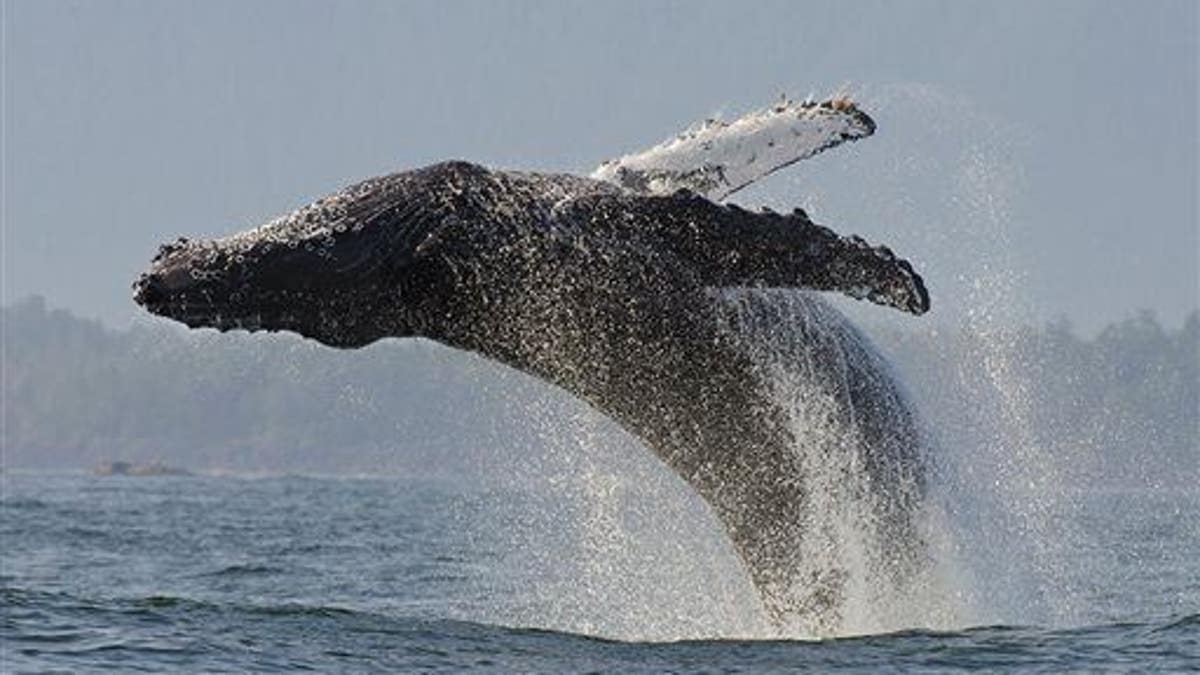
This undated image released by PBS shows a humpback whale. (Bertie Gregory/naturepl/PBS via AP)
Humpback whales, which humans have long observed to be solitary creatures, are gathering in large groups to feed, and it's kind of astounding the scientists who study them.
Typically living alone or in pairs, a group of 10 to 15 is considered big, but research crews have now spotted super-groups as large as 200 on three occasions, they report in the journal PLOS One. Not only was it "novel" to spot so many humpbacks in one place, but the sightings took place in 2011, 2014, and 2015 off the southwestern tip of South Africa in the fall, which is when they're typically hunting further south in Antarctic waters, reports the Smithsonian.
"I've never seen anything like this," lead author Ken Findlay tells New Scientist. The team has posited some theories about what's going on, but it's still anyone's guess.
The simplest one is that the practice isn't as rare as humans might think. "It’s possible that the behavior was occurring but just not where it was visible," says Findlay.
More From Newser
A variation of that suggests that this is an age-old practice of the whales, but it hasn't been visible because the humpback population was previously decimated by humans—that is, we saw them as loners merely because so few of them existed.
Now that their numbers are bouncing back, that might be changing. Similarly, the increase in numbers might be forcing the whales to change up their usual hunting locales.
(This "granny" whale is believed to be older than 100.)
This article originally appeared on Newser: New Habit of Humpbacks Puzzles Researchers
